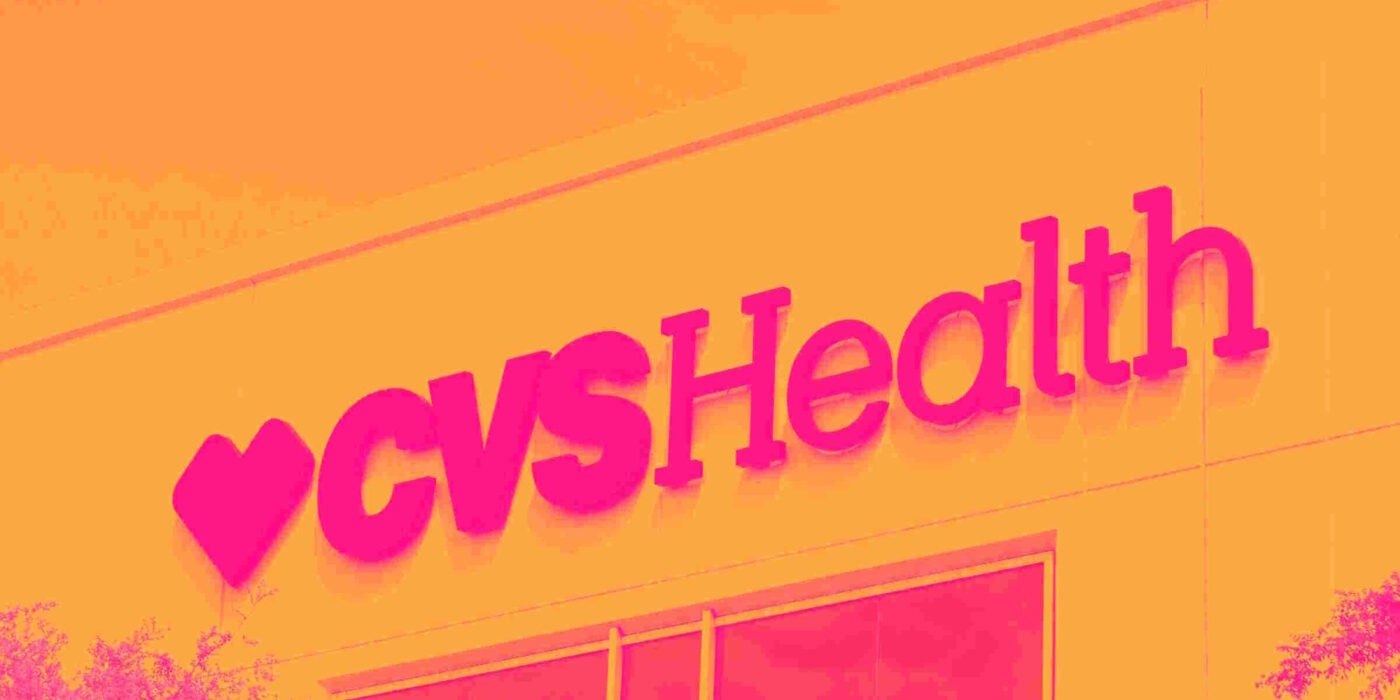
Diversified healthcare company CVS Health (NYSE: CVS) reported Q2 CY2025 results topping the market’s revenue expectations, with sales up 8.4% year on year to $98.92 billion. Its non-GAAP profit of $1.81 per share was 23.9% above analysts’ consensus estimates.
Is now the time to buy CVS Health? Find out by accessing our full research report, it’s free.
CVS Health (CVS) Q2 CY2025 Highlights:
- Revenue: $98.92 billion vs analyst estimates of $94.11 billion (8.4% year-on-year growth, 5.1% beat)
- Adjusted EPS: $1.81 vs analyst estimates of $1.46 (23.9% beat)
- Adjusted Operating Income: $3.81 billion vs analyst estimates of $3.21 billion (3.8% margin, 18.7% beat)
- Management raised its full-year Adjusted EPS guidance to $6.35 at the midpoint, a 4.1% increase
- Operating Margin: 2.4%, in line with the same quarter last year
- Free Cash Flow Margin: 1.3%, down from 2.7% in the same quarter last year
- Same-Store Sales rose 15.4% year on year (6.4% in the same quarter last year)
- Market Capitalization: $78.81 billion
Company Overview
With over 9,000 retail pharmacy locations serving as neighborhood health destinations across America, CVS Health (NYSE: CVS) operates retail pharmacies, provides pharmacy benefit management services, and offers health insurance through its Aetna subsidiary.
Revenue Growth
A company’s long-term sales performance is one signal of its overall quality. Any business can have short-term success, but a top-tier one grows for years. Luckily, CVS Health’s sales grew at a decent 7.9% compounded annual growth rate over the last five years. Its growth was slightly above the average healthcare company and shows its offerings resonate with customers.
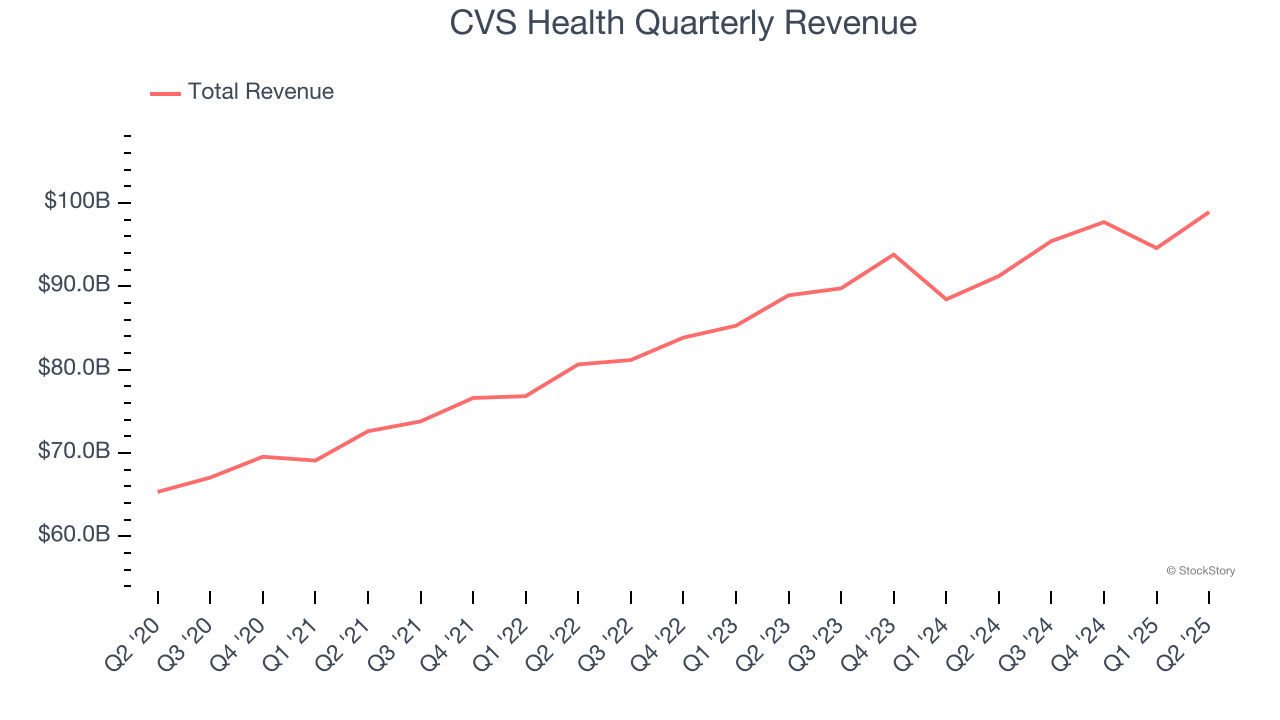
Long-term growth is the most important, but within healthcare, a half-decade historical view may miss new innovations or demand cycles. CVS Health’s recent performance shows its demand has slowed as its annualized revenue growth of 6.8% over the last two years was below its five-year trend. 
We can better understand the company’s revenue dynamics by analyzing its same-store sales, which show how much revenue its established locations generate. Over the last two years, CVS Health’s same-store sales averaged 10.9% year-on-year growth. Because this number is better than its revenue growth, we can see its sales from existing locations are performing better than its sales from new locations. 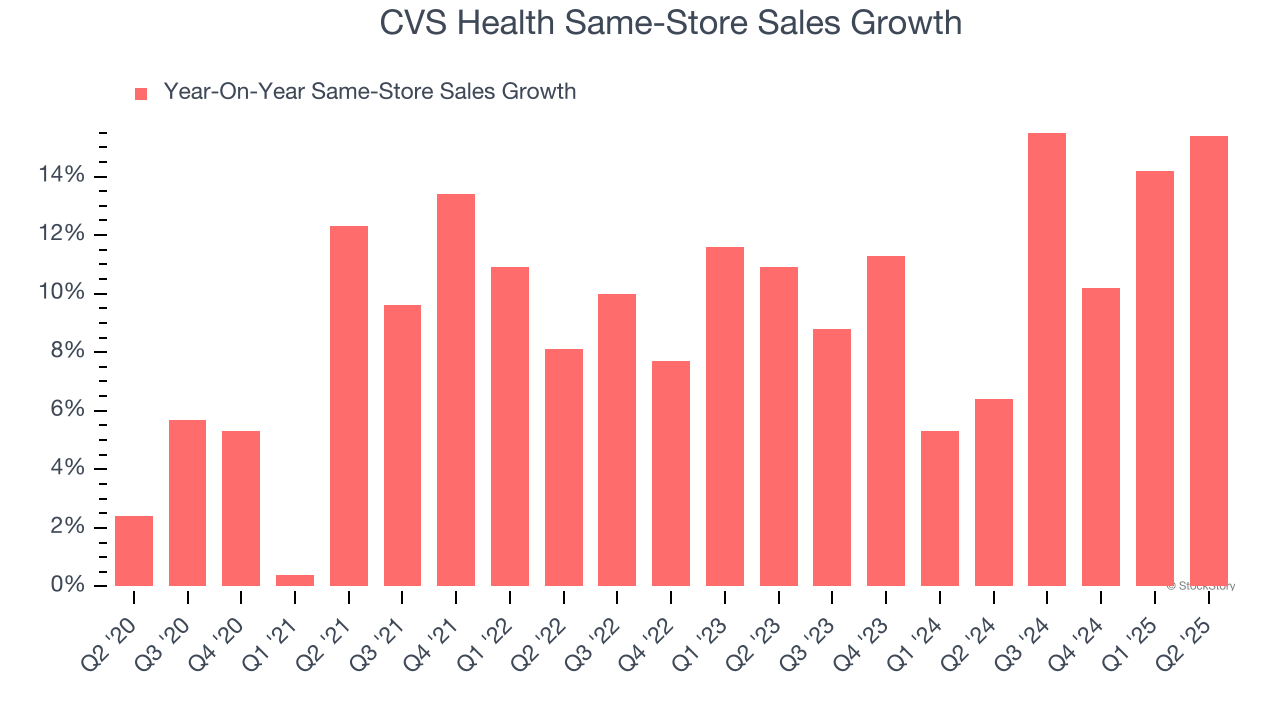
This quarter, CVS Health reported year-on-year revenue growth of 8.4%, and its $98.92 billion of revenue exceeded Wall Street’s estimates by 5.1%.
Looking ahead, sell-side analysts expect revenue to grow 1.3% over the next 12 months, a deceleration versus the last two years. This projection doesn't excite us and suggests its products and services will see some demand headwinds.
Unless you’ve been living under a rock, it should be obvious by now that generative AI is going to have a huge impact on how large corporations do business. While Nvidia and AMD are trading close to all-time highs, we prefer a lesser-known (but still profitable) stock benefiting from the rise of AI. Click here to access our free report one of our favorites growth stories.
Adjusted Operating Margin
Adjusted operating margin is an important measure of profitability as it shows the portion of revenue left after accounting for all core expenses – everything from the cost of goods sold to advertising and wages. It’s also useful for comparing profitability across companies because it excludes non-recurring expenses, interest on debt, and taxes.
CVS Health was profitable over the last five years but held back by its large cost base. Its average adjusted operating margin of 4.8% was weak for a healthcare business.
Analyzing the trend in its profitability, CVS Health’s adjusted operating margin decreased by 2.1 percentage points over the last five years. The company’s two-year trajectory also shows it failed to get its profitability back to the peak as its margin fell by 1.6 percentage points. This performance was poor no matter how you look at it - it shows its expenses were rising and it couldn’t pass those costs onto its customers.
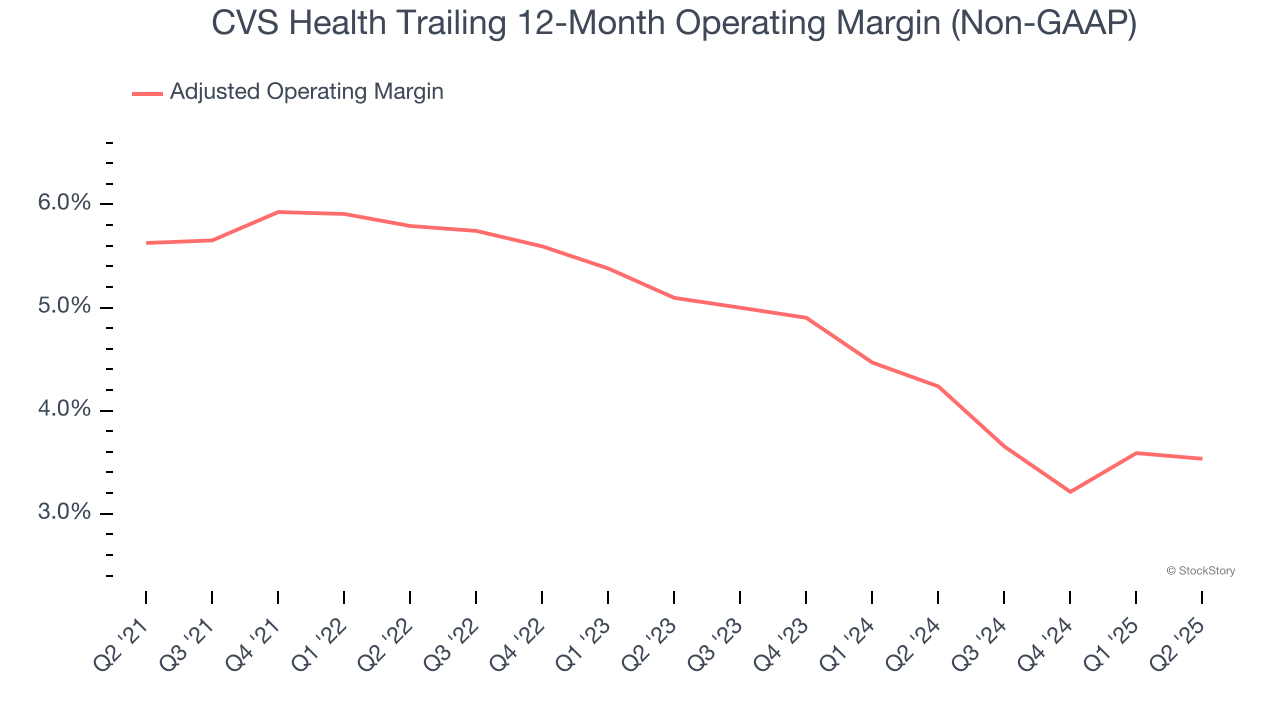
This quarter, CVS Health generated an adjusted operating margin profit margin of 3.8%, in line with the same quarter last year. This indicates the company’s overall cost structure has been relatively stable.
Earnings Per Share
Revenue trends explain a company’s historical growth, but the long-term change in earnings per share (EPS) points to the profitability of that growth – for example, a company could inflate its sales through excessive spending on advertising and promotions.
Sadly for CVS Health, its EPS declined by 4.8% annually over the last five years while its revenue grew by 7.9%. This tells us the company became less profitable on a per-share basis as it expanded due to non-fundamental factors such as interest expenses and taxes.
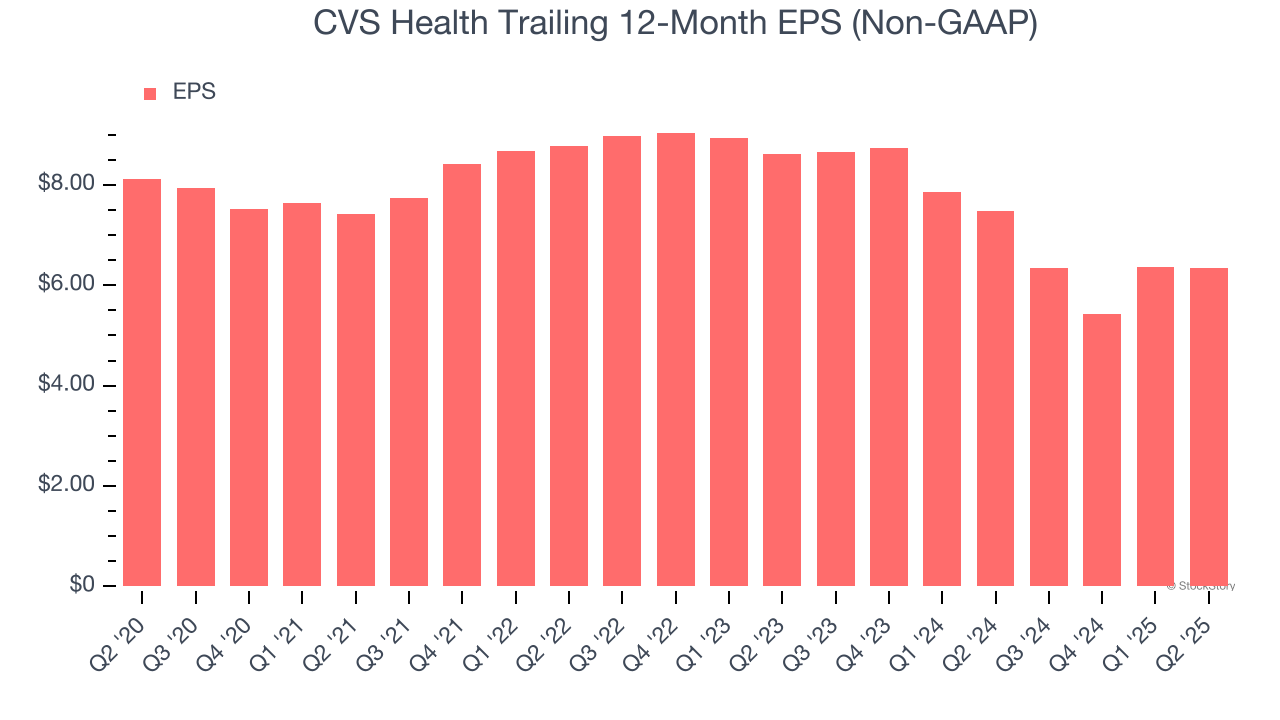
We can take a deeper look into CVS Health’s earnings to better understand the drivers of its performance. As we mentioned earlier, CVS Health’s adjusted operating margin was flat this quarter but declined by 2.1 percentage points over the last five years. This was the most relevant factor (aside from the revenue impact) behind its lower earnings; interest expenses and taxes can also affect EPS but don’t tell us as much about a company’s fundamentals.
In Q2, CVS Health reported EPS at $1.81, down from $1.83 in the same quarter last year. Despite falling year on year, this print easily cleared analysts’ estimates. Over the next 12 months, Wall Street expects CVS Health’s full-year EPS of $6.34 to grow 1.6%.
Key Takeaways from CVS Health’s Q2 Results
We were impressed by how significantly CVS Health blew past analysts’ same-store sales expectations this quarter. We were also excited its revenue outperformed Wall Street’s estimates by a wide margin. Zooming out, we think this was a solid print. The stock traded up 7.8% to $67.17 immediately following the results.
CVS Health may have had a good quarter, but does that mean you should invest right now? When making that decision, it’s important to consider its valuation, business qualities, as well as what has happened in the latest quarter. We cover that in our actionable full research report which you can read here, it’s free.




